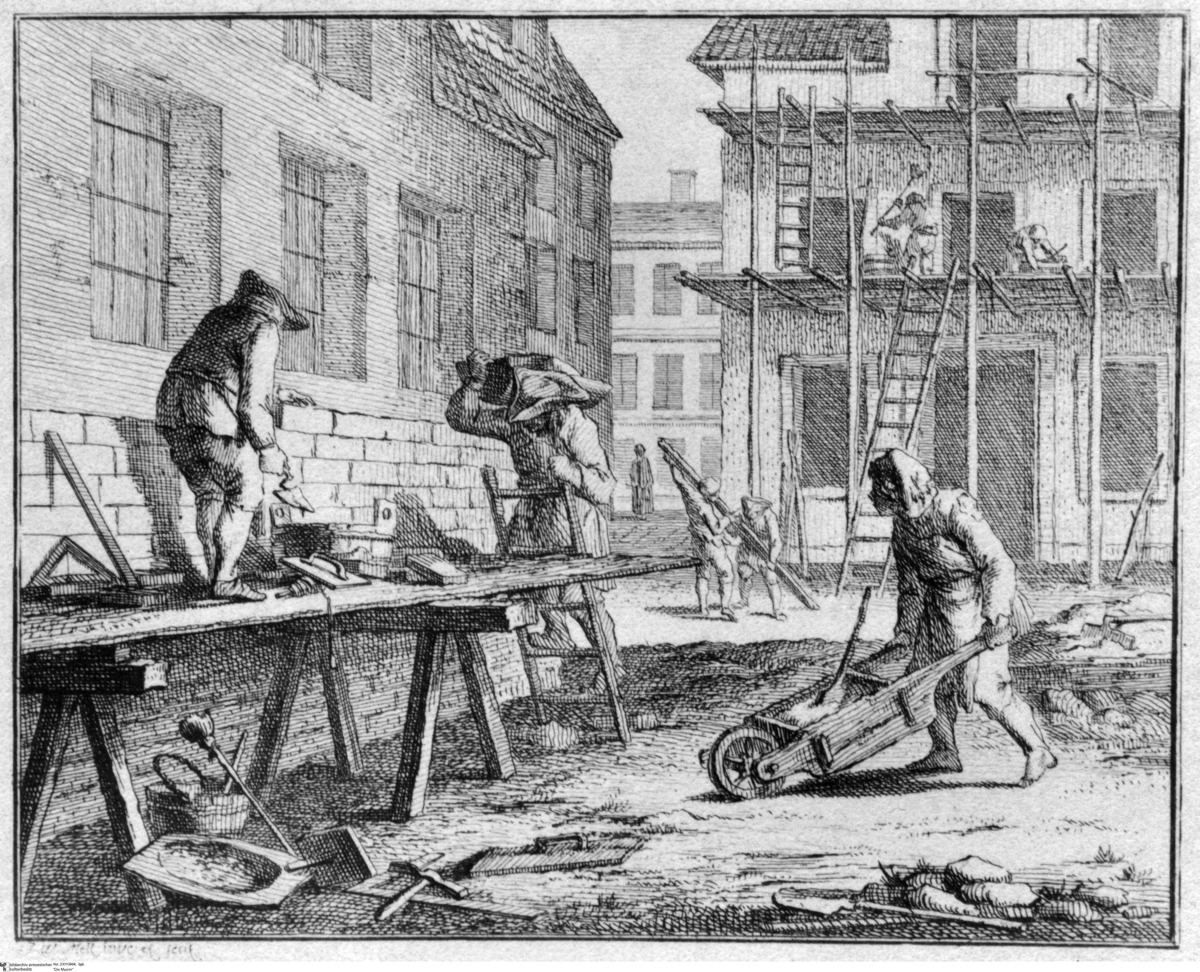Abstract
As members of the building trade, masons were subject to compulsory membership in the guilds that developed in German cities starting in the eleventh and twelfth centuries. The guilds acted as regulatory bodies, determining prices, membership numbers, working hours, and wages until they were abolished in the first half of the nineteenth century. The man laying bricks in this scene would have been a master mason. Apprentices commonly started at the age of fourteen and advanced to journeyman status after four or more years of training in the trade. The journeymen, typically literate and versed in guild affairs and urban politics, then worked toward promotion to master in order to marry, start a family, and enter the honorable ranks of the guild-masters. Population growth, private demand, and state-sponsored economic expansion led to a boom in the building trades after the Thirty Years War and, once again, in the later eighteenth century. In the age of absolutism, some master bricklayers built up sizable businesses and employed large numbers of journeymen, thereby heralding the end of traditional guild organization in the building trades.
